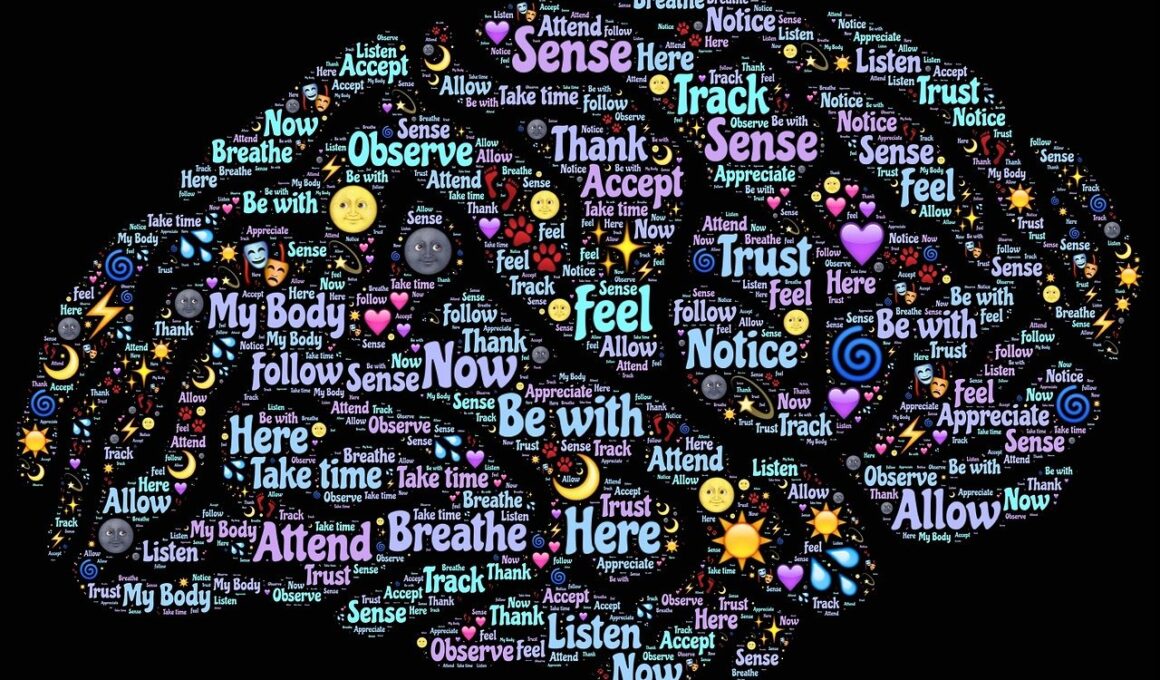The Connection Between HIIT and Neuroplasticity
High-Intensity Interval Training (HIIT) has gained considerable attention for its benefits, not just physically, but also mentally. This training form has shown potential in enhancing neuroplasticity, which is the brain’s ability to adapt and change. Neuroplasticity plays a critical role in learning, memory, and recovery from brain injuries. When engaging in HIIT, the bursts of high-intensity exercise followed by rest periods are thought to stimulate various neurotransmitters and growth factors, which can lead to improved brain function. Some studies suggest that intense exercise can promote the production of Brain-Derived Neurotrophic Factor (BDNF), a protein that supports neuron growth and maintenance. Incorporating HIIT into your routine could lead to better cognitive flexibility and resilience. As such, athletes and mental health advocates alike are recognizing the value of these workouts not only for physical endurance but for enhancing mental capacity as well. By embracing HIIT, individuals may find themselves not just improving physically, but also unlocking their brain’s full potential. This dual benefit is increasingly attracting interest amongst fitness enthusiasts as well as those exploring mental wellness strategies.
Studies show that the neuroplastic effects of HIIT are particularly beneficial for those experiencing cognitive decline or mental health issues. Engaging in regular HIIT sessions may help combat symptoms of anxiety and depression, bolstering mood and mental clarity. This approach could be linked to increased serotonin levels, often referred to as the ‘feel-good’ hormone. The effectiveness of HIIT extends to shaping the brain’s structure; researchers suggest that participants may exhibit enhanced grey matter volume in regions associated with memory and mood regulation. More importantly, the structured yet flexible nature of HIIT can provide a sense of accomplishment and motivation, which is crucial for mental health recovery. Moreover, HIIT can be performed almost anywhere and doesn’t require extensive programs or long hours, making it accessible. It invites participation in a disciplined yet challenging format that can be tailored to any fitness level. These features can greatly reduce the barriers that often hinder people from engaging in mental health-promoting activities. Embracing this exercise modality could represent a significant step towards not just physical but also emotional well-being.
HIIT and Cognitive Function Improvements
Participating in HIIT may yield remarkable benefits in cognitive function over time. The intense bursts of activity stimulate blood flow not only to muscles but also to the brain, facilitating oxygen delivery which is essential for optimal function. Increased vascularization in the brain can lead to a decrease in cognitive decline. This could particularly benefit older adults in maintaining cognitive health. Moreover, the multi-tasking requirement during HIIT, which alternates between exercises rapidly, may significantly enhance attention and focus. Engaging in such workouts demands mental engagement and strategic thinking, contributing to enhanced problem-solving skills. The quick adaptations needed when switching exercises challenge the brain and encourage neuroplastic growth. HIIT gives learners a new avenue to improve cognition amidst conventional brain-training activities. Similarly, individuals who might find traditional exercise routines monotonous may find the challenging nature of HIIT more appealing. Recognizing and enhancing cognitive functions through HIIT can lead to improved performance not only in leisure activities but also in tasks requiring critical thinking and decision-making in daily life.
The mental resilience gained from engaging in HIIT can also correlate with performance in stressful situations. HIIT often pushes individuals to their physical limits, and overcoming such challenges can build mental fortitude. Research indicates that individuals who regularly partake in high-intensity exercises tend to be better equipped to handle stress and anxiety. This advantage can translate to various life aspects, enhancing overall mental health. Moreover, striving for personal bests in HIIT promotes a growth mindset, reinforcing the belief that abilities can develop over time. Coupled with the endorphin rush associated with exercise, this reinforces a positive outlook on life. Achieving personal milestones in fitness can enhance self-esteem and foster a greater sense of control over one’s mental and emotional states. HIIT not only conditions the body but also cultivates a robust mental landscape. Understanding the interplay between physical exertion and psychological resilience is essential, especially in today’s fast-paced environment where mental challenges abound. Ultimately, this synergy between physical and mental wellness serves to underline the holistic approach to health.
Integrating HIIT into Daily Routines
Incorporating HIIT into daily routines can be a transformative experience for mental health. Its adaptability allows individuals to engage in effective workouts without lengthy commitments. Just twenty to thirty minutes of HIIT can suffice to stimulate substantial benefits. Furthermore, HIIT can be executed using minimal equipment, increasing accessibility. This ease of integration fosters a consistent practice, which is critical for reaping mental health benefits over time. For busy individuals, utilizing short HIIT sessions during breaks could yield cumulative cognitive boosts throughout the day. Employers may even find that encouraging HIIT in the workplace promotes a healthier environment, elevating employee morale and productivity. Additionally, pairing HIIT with mindfulness practices such as meditation can amplify its neuroplasticity effects. Strategic breathing during high-intensity phases integrates mental training, enhancing focus and relaxation. Developing a routine that combines aerobic, strength, and flexibility components within HIIT enhances overall cognitive capacity while supporting mental health strategies. Consistency is essential, and cultivating a supportive environment whether at home or within community fitness groups encourages regular participation and accountability.
The community aspect of HIIT also supports mental well-being. Participating in group sessions can foster connections, reducing feelings of isolation. This connectivity plays a vital role in improving emotional health, particularly during challenging times. Group workouts present opportunities for social interaction, further enriching the experience and promoting regular engagement. The collective atmosphere of support during HIIT sessions encourages individuals to push through physical and mental barriers together. Additionally, witnessing peers overcome similar struggles can serve as inspiration, motivating everyone involved to achieve their goals collectively. Moreover, friendly competition can encourage individuals to challenge themselves further. Taking part in a community promotes a sense of belonging—increasing overall happiness and reducing stress. The combination of social support, physical activity, and shared accomplishments can significantly enhance an individual’s psychological wellness. Overall, incorporating community-driven approaches into HIIT training can lead to fostering a nurturing environment essential for mental resilience and growth. Building these connections translates to a healthier community, cultivating a cycle of mutual support and shared success.
Conclusion: Embracing HIIT for Mental Health
Embracing HIIT presents multifaceted opportunities that can significantly enhance mental health through neuroplasticity. With its ability to improve cognitive function, reduce symptoms of anxiety or depression, and increase overall resilience, HIIT serves as a powerful tool for mental wellness. The mental benefits derived from HIIT continue to be validated by ongoing research, revealing the profound connections between physical activity and cognitive processes. As individuals recognize the convergence of physical fitness with mental health, integrating HIIT into personal and social routines becomes ever more appealing. Whether achieved individually or within a communal setting, the strength gained through HIIT can be transformative. The focus on empowering the mind alongside the body generates positive outlooks that ripple into every aspect of life. Ultimately, the pursuit of mental well-being through HIIT may reshape conventional views on fitness. The unique blend of rigorous physical activity and its neuroplastic benefits positions HIIT as a cornerstone in holistic health strategies. Establishing a consistent HIIT practice is an important step towards achieving optimal wellness, unlocking new potentials within oneself.


